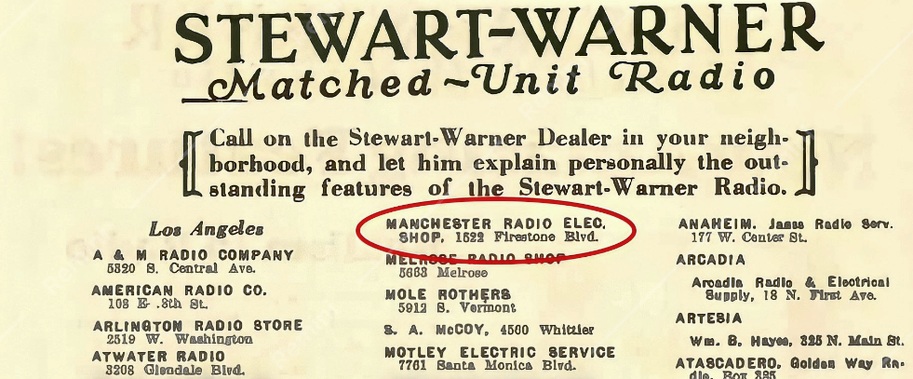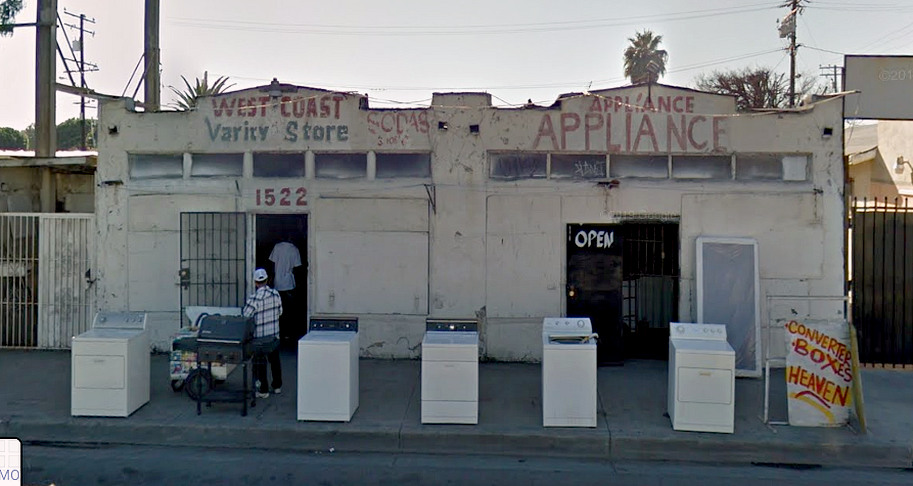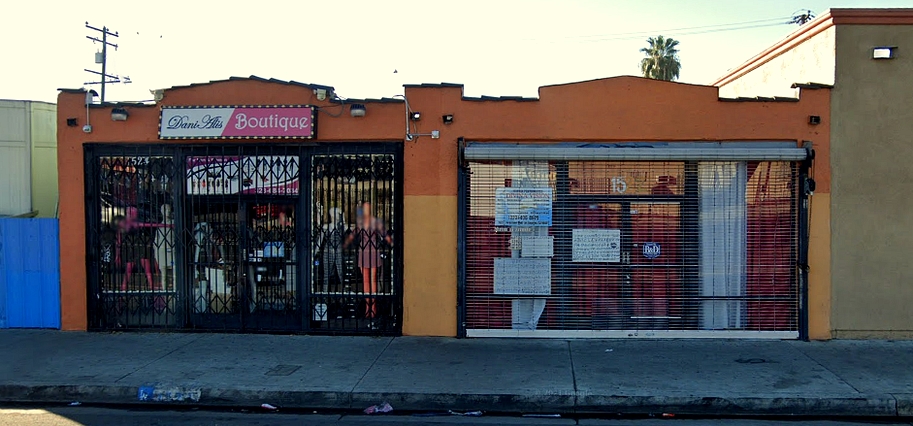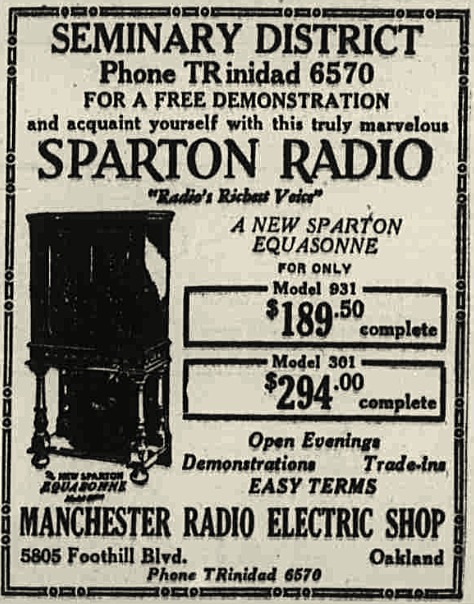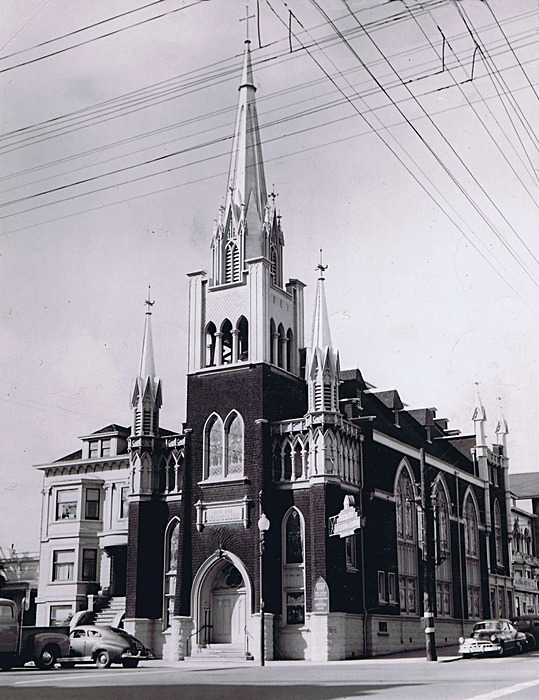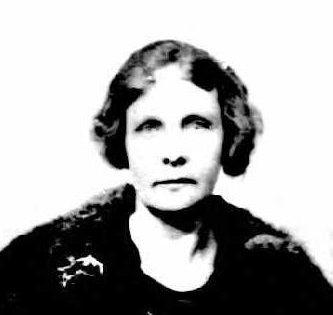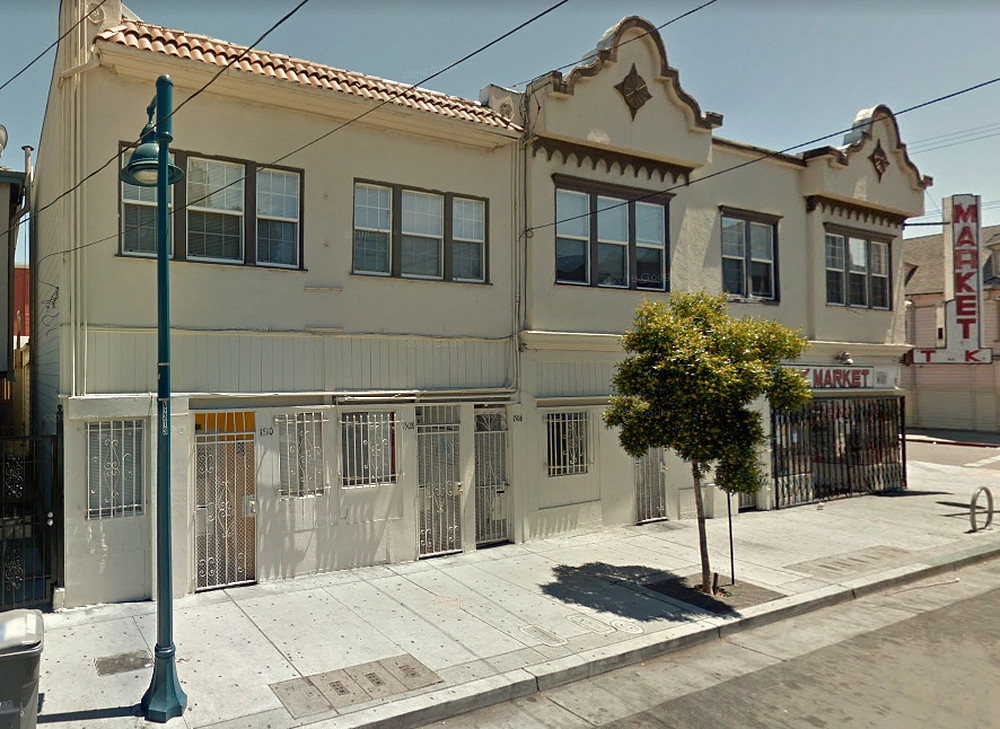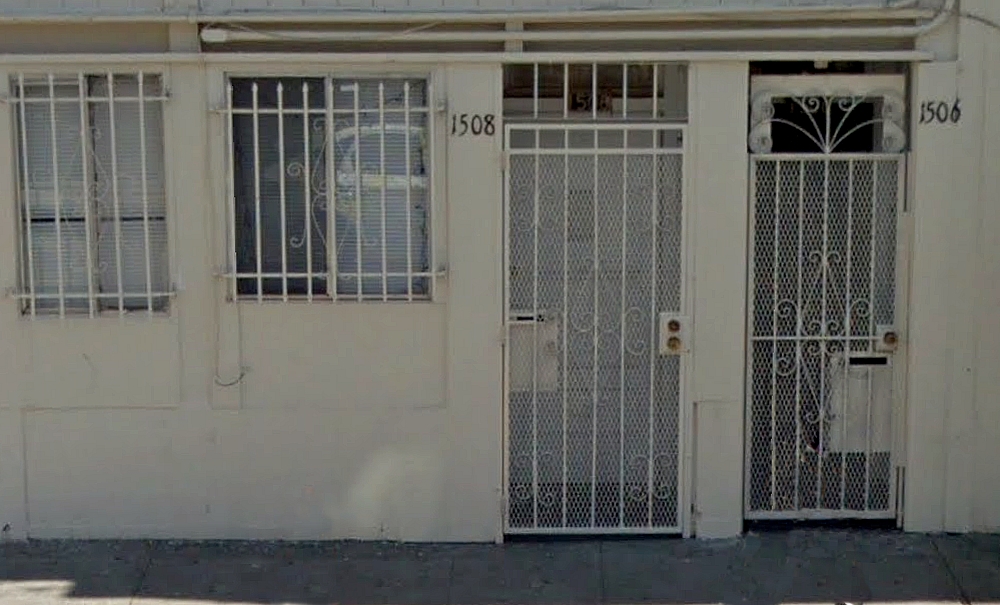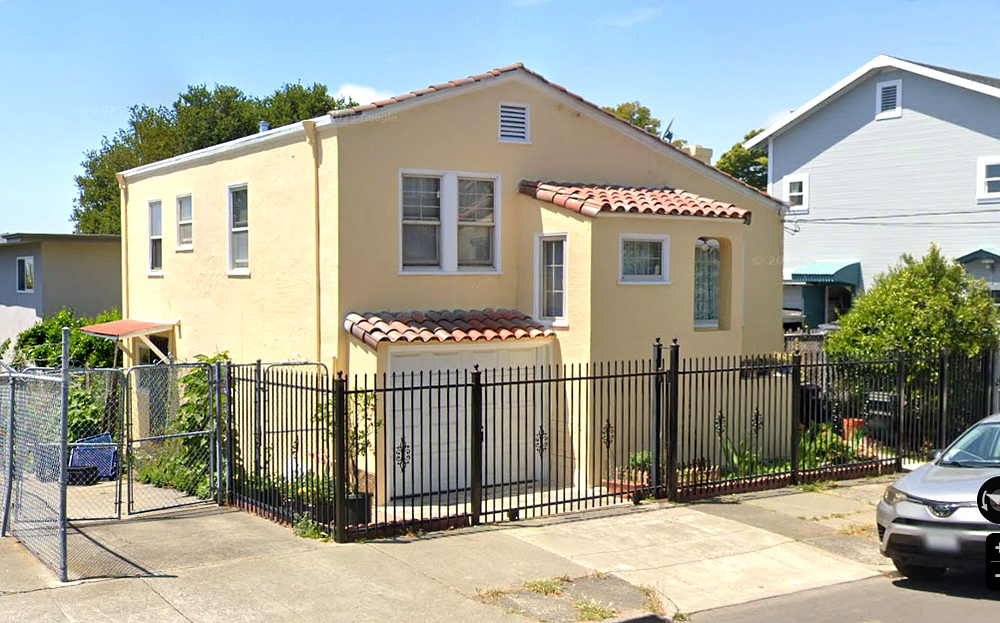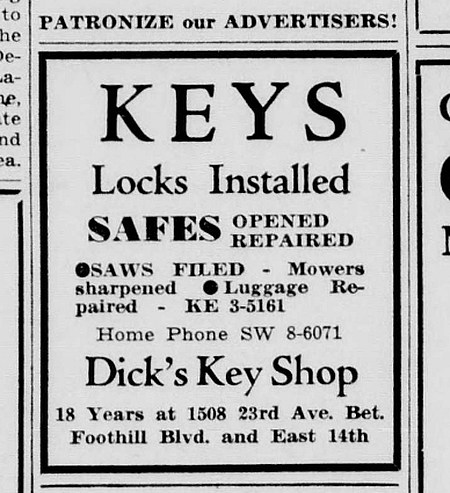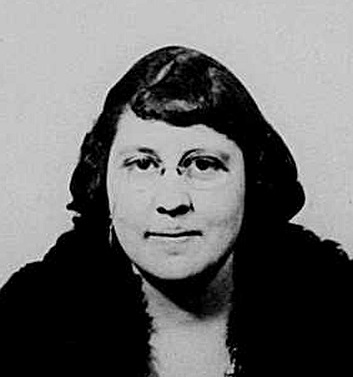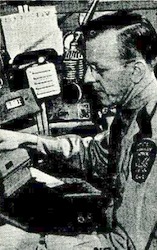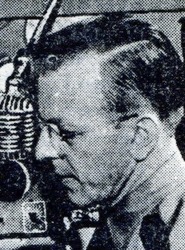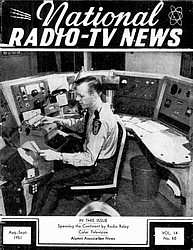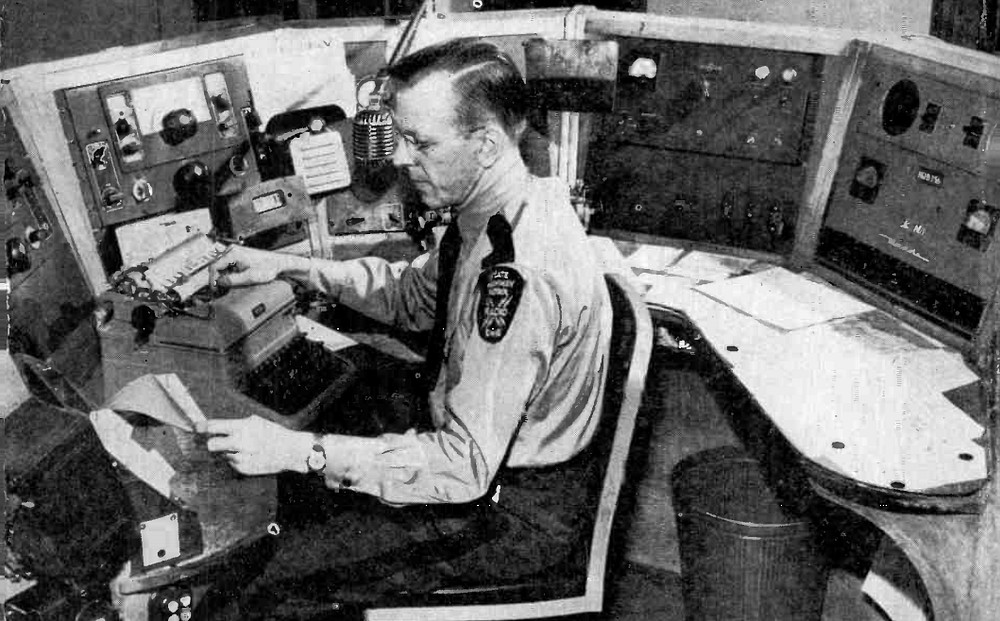|
|
|
|
|
|
In January of 1924, Elmer opened the "Nadeau Radio
Electric Shop." According to Detail Print
#58 (MRL No.4 Telefunkin Crystal Set) the address
was 1909 Nadeau Avenue. His brother Cyril may have worked
with him, as Elmer referred to it as "our" store.
This was just up the block and around the corner
from their house at 8011 Crockett Boulevard! In
Radio Builder & Hobbyist #38, Elmer related that
he built many crystal sets while at this location,
and sold them with a cabinet for $15.00 (equivalent
to about $270.00 in 2024.)
The building that housed the shop at 1909 Nadeau no
longer exists. It is currently (as of 2024) an empty
lot adjacent to an apartment complex.
We also have an address for a shop
with the same name on the same street from the
Los Angeles Times listed as 1928 Nadeau
Avenue.
1909 and 1928 Nadeau were across the street from
each other, about 100 feet apart. Like the 1909
address, 1928 no longer exists.
|
Los Angeles Times
advertisement, dated June 18, 1922. |
It
seems the Nadeau Radio Electric Shop had
existed prior to Elmer opening his own shop
across the street.
According to the 1922-1923 Los Angeles
directory, it was owned by Louis and Eva Kipp.
Their residence was next door at 1930 East
Nadeau Street. On the other side of the
radio shop, at 1926 Nadeau, was a hardware
store owned by William Kipp. The buildings
no longer exists.
Louis Kipp seems to have vacated the Nadeau
Avenue store and opened a radio and electric
supplies shop at 1749 E. Florence Ave, two
blocks away. How is it that Elmer opened a
store with the same name on the same street,
but didn't just move into the existing
store? Did competition from Elmer cause the
Kipp's to move, or did they move first, then
Elmer opened his own store? |
| |
|
|
| |
This correspondence to "The Practical
Druggist" is dated December 27, 1923. Elmer
opened the Nadeau Radio Electric Shop
a month later. Modern Radio Laboratories may
never have appeared in 1932 if Elmer had
opened a drugstore instead of a radio store.
The country was in the middle of what is
known as the "radio craze" of the 1920s,
which certainly would have influenced his
decision. |
|
Later in
1924 Elmer moved the radio shop to Manchester Avenue
in Los Angeles, and named it the "Manchester
Radio Electric Shop." This shop was one mile
from his house. He worked in the store from 9AM till
9PM six days a week, and a half day on Sunday.
According to Elmer, (Radio Notes No.1, page 16 and
MRL Data Sheets Vol 3, Page 11) he made hundreds of
Harkness Reflex sets. Back then you could trade in
your old radio when purchasing a new one. Elmer
would disassemble the old sets and build a Harkness
Reflex using his own coils. He then added a power
supply, batteries, a cabinet and a speaker, and sold
them for $65. He was also a dealer of
Stewart-Warner, Federal, Sparton, Ungar & Watson,
Edison, Grebe, and Majestic brand radios.
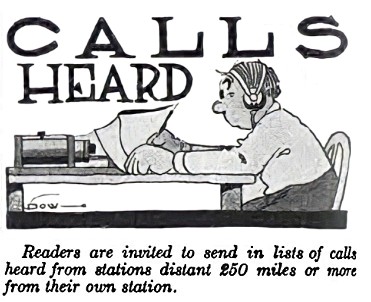 |
In
various issues of "Radio News" and QST
magazine, it was reported that the call sign
6NW was heard all over the country
from 1925 to 1928. 6NW was also heard in
Venezuela, Japan, Alaska, and even on a
submarine docked at a port in Honolulu,
Hawaii. 6NW made the "Brass Pounders League"
in the March 1926 issue of QST with 117
contacts.
Elmer had been issued
the call letters 6NW in 1919 after
WWI, but it seems he had that call prior to
the war.
The March 1922 issue of
Radio contains a report from station
7LR in Albany, Oregon, of stations he
received. One of them was 6NW. It was likely
Elmer Osterhoudt who was heard.
However, the rest of the contacts weren't
made by Elmer Osterhoudt. Elmer's license
expired in May of 1922. The call 6NW was
reassigned to James F. Upchurch of Vallejo,
California.
In 1924, 6NW was assigned to Emry C. Stuedle
of Vermont Street in Los Angeles,
California. Emry Stuedle seems to be the
person who made the contacts heard all over
the world. Coincidently (or
not) when Elmer opened the Manchester Radio and
Electric Shop in 1924 it was also the end of
the era of the spark-gap transmitter.
In December 1915, the year Elmer made his
first crystal set, the Bureau of Navigation
had issued 6NW to Morrison R. Webb, of 541
18th Street in Oakland, CA. Imagine if Elmer
had heard 6NW instead of 6JG on that fateful
day, then ended up with the first call
letters he ever heard!
Three character amateur call letters were frequently
reassigned. Since the first digit
represented the area of the country, there
were only two letters available for the call
sign in each of nine districts. California
was "6." There are 676 combinations of the
26 letters in the alphabet (26 x 26).
However, the letters X, Y and Z were not
used as the first letter, limiting the
number to 598. The number of stations
quickly exceeded that amount and a third
letter, either W or K, was added in the 1920s. 6NW became
W6NW sometime between 1928 and 1929. Of
course, this merely doubled the amount of
available call signs, and the format
continued to evolve over the years.
|
Elmer wrote that the Amateur Radio guys wanted him
to set up a station in his shop, but he refused
because the shop would always be full of loiterers
and no work would get done. He said that calling
"CQ" far into the night would be a waste of time
that could be put to other uses. "Running a radio
shop took all your time if you wanted to stay in
business."
|
|
| In 1924 Elmer's radio store, the
Manchester Radio Electric Shop, was located at 1522
Manchester Avenue in Los Angeles. Manchester Avenue was
renamed East Firestone Boulevard around 1927, after the Firestone Tire & Rubber Co
opened a factory on a 40 acre site
about a mile away on the same street. The city directories
for the Watts-Compton area of California show the store was
there till 1928. Elmer moved to Oakland CA later in 1928. |
|
|
|
|
|
|
From "Radio Doings" March 20, 1927 |
|
|
|
|
|
From "Radio Doings" November 25, 1928 |
|
|
|
|
1522 Firestone Boulevard, Los Angeles, CA.
Site of the Manchester Radio Electric Shop in 1924.
Photo from 2011.
Firestone Boulevard was named Manchester Avenue prior to
1927. |
|
|
|
|
|
1522 Firestone Boulevard in 2021. According
to Paul Nelson, Elmer's father Wilbert built this building. |
|
|
|
|
|
|
|
|
| Watts-Compton City directory entries for
1927. The "r" next to the address number indicates this was
Elmer's residence. The other Osterhoudt's all lived on
Crockett Boulevard. |
|
|
|
|
|
|
|
|
|
| Elmer had at least two salesmen working
for him. In 1925 Victor E. Harvlie, who was an electrician,
worked in the store. In 1927 Victor left to work at Graham
Electric Shop, two blocks away at 1704 Manchester Ave.
(Notice the name doesn't have the word "Radio" in it. They
occupied a large building at the corner of Manchester and
Graham.) Victor was replaced by Herman MacMillian in 1927. |
|
|
|
|
|
|
|
| Earl Fricke and Al Barnette worked for
Elmer in 1927 and 1928. Barnette's address was three blocks from the store.
Elmer wrote that he used to hire "young fellows who were
interested in Radio and did a lot of dabbling" for radio
service work at his radio shops. For sales work, he paid a
10 percent sales commission. |
|
|
|
|
|
|
|
|
|
|
|
|
|
|
|
|
In 1928 Elmer moved into
a brand new house on 28th street in Oakland, California (Brooklyn Township, in Alameda County).
By this time he had met his soon-to-be wife, Mabel Smith.
The radio shop was located not far away on Foothill
Boulevard.
Several city directories list the
address as 5809 Foothill blvd,
but that
address was also listed as occupied by "California Garden
Supply Company." The actual
address of Manchester Radio was 5805 Foothill Boulevard.
A real estate ad from 1924 describes 5805 as having 8 rooms
and two baths on a 40' x 130' lot.
Both addresses are now
occupied by an abandoned Walgreens, covered in graffiti. The
store closed on January 30, 2025 due to rampant shoplifting.
Whatever buildings were there in 1928 are long gone.
Notice Cyril's address is 510 28th Street. Cyril and
Leona rented apartment number 3 at this address and lived there with two of Leona's brothers, Virgil and Frank Peer,
as well as their own children, Everet and Raymond.
So what is the Kingsley Circle address? It's a one bedroom
apartment in a building that was built in 1924, so it was
quite new at the time.
It is only two blocks away from Elmer's radio store. Cyril was a radio repairman
and he probably worked with Elmer in the Nadeau Avenue shop.
Did he live in the apartment and work in the Foothill blvd store, while
the rest of the family lived on 28th Street?
Another MRL mystery. Elmer never mentioned Foothill
Boulevard in any of his
literature. |
|
|
|
|
|
|
An advertisement in the Oakland Tribune
(September 25,1929) for Spartan radio dealers gives us the name and
address of
the store. A similar ad for Grebe radio states the shop is open in
the evenings and a telephone call will "bring a set tonight."
The Sparton Model 301 that went for
$294 would cost $5,290 today. |
|
|
|
|
|
|
Fourteen more radio advertisements in The Oakland
Tribune, from June to December of 1929, give the address
as 5805 Foothill Blvd. (These were advertisements for
various radio brands where Elmer's shop was listed as a
source.) |
|
|
On October 7, 1929, Elmer and Mabel Elizabeth Smith were
married by Rev. C. O. Lundquist in the Ebenezer Evangelical
Lutheran Church in San Francisco, and they moved into the
new house on 28th Street, in Oakland.
The church at the time had a Swedish congregation.
Mabel's mother (maiden name Alma Anderson) was born in
Sweden.
Ebenezer Swedish Evangelical Lutheran Church in
San Francisco.
This church survived the earthquake of 1906 but
burned down in 1993.
Click for full size. |
This was a time of unprecedented prosperity and
innovation in the United States. What a great time to get
married! In addition to the booming radio business, the
Osterhoudt's could look forward to a life of new inventions;
everything from an electric washing machine, refrigerator,
and vacuum cleaner to sliced bread and Penicillin. The most exciting
news was that Television had evolved from a system of motors
and spinning disks to an electronic version invented by
Philo T. Farnsworth, who demonstrated it to the public just
one year prior. Soon, everyone would be able to "see by
wireless" in their homes using Television, and The Manchester Radio
Electric Shop could add the word "Television" to its name.
The future must have appeared very promising.
Two weeks after they were married the stock market
crashed, followed by the Great Depression. Sales of
clothing, cars and radios collapsed. Industrial production
fell by 47% and nearly 25% of American households did not
have a single employed wage earner.
Advertisements in The Oakland Tribune for the
Manchester Radio Shop ceased in December of 1929. Business became so bad
Elmer decided to go back to sea. He spent a month at Pacific
Radio School brushing up on his code. but when he tried to
get a job at RCA on a ship, the Chief Radio Operator
laughed. There were 150 guys on a list waiting for the same
job.
The US Census shows that in April, 1930, Cyril and Leona
still lived at 510 28th
Street in Oakland with two of Leona's brothers (The address is now a parking lot.) Cyril is listed as employed as a Radio Mechanic in a
radio shop, but he was not working at the time of the
census.
Later in 1930 Cyril and Leona moved back to
Los Angeles, to 8019½
Crockett Boulevard. Elmer and Cyril's father and Uncle
John had built this in 1925. The rest of the Osterhoudt's
(except Elmer) probably lived in the main building at
8019 Crockett. (Today 8019 and 8019½
seem to have been combined into one large building, with
8019¼ in the rear of the property.)
On June 18, 1930, John Osterhoudt died of pneunomia and
heart disease at the age of 56. Cyril and
Leona were officially married on August 23, 1930. On
December 3, 1930, Cyril and Elmer's father Wilbert passed away
due to heart disease. He was 60 years old.
Mabel's mother passed away on April 1,
1930. She was 52.
| |
|
|
| |
Alma Anderson
Smith - Mabel's mother. |
|
Elmer kept the
radio shop open but moved it from Foothill Boulevard to 1508
23rd Avenue, much closer to where they lived. No longer
named "Manchester Radio Electric Shop," the new store was
named Modern Radio Laboratories. In January of 1932 he
began the mail order business after he "invented" the celluloid plug-in coil and the No.1 and No.2
crystal sets. The trademarks for MRL and Modern
Radio Laboratories were granted on December 15, 1932.
|
|
|
|
|
|
|
|
The store phone number, from the 1932 Yellow
Pages. |
|
|
|
|
|
1508 23rd Avenue, Oakland, CA (second
door from the left) This was the site of the "Modern Radio
Laboratories" radio store in 1932.
Photo is from 2016.
This building was less than a mile from Elmer and Mabel's
residence. The building was built in 1891 and renovated in
1911, so we can imagine it looked very much like this in
1932. It currently contains 10 one bedroom apartments. |
|
|
|
|
|
|
| 1508 is the downstairs
apartment/storefront. Of course, there wouldn't have been
bars on the windows in 1932. The store was only here for a
short time. By 1934 it was closed and the Osterhoudt's were in San Francisco.
20 years later Elmer and Mabel would own an entire 9 unit
apartment complex of their own in Redwood City, California. |
|
|
|
|
|
|
Year 1933 Oakland, California City Directory entry.
Notice h2125 E 28th is their home address. |
|
|
|
|
|
Here's the home phone number. |
|
|
|
|
The Osterhoudt's residence at 2125 East 28th Street,
Oakland, CA, about 1 mile from the 23rd Ave store location.
The house was built in 1928, the year Elmer moved into it.
The 1930 census shows the Osterhoudt's owned the house and it was
valued at $4000. |
|
|
|
|
From RADIO magazine, June 1933. The address is
Elmer's radio store.
$1.00 in 1933 is the equivalent of $20.00 in 2020. |
|
|
|
1934 San Francisco phone book entry
1938 San Francisco directory entry
|
In 1933 Elmer and
Mabel closed the radio shop and moved to Mabel's childhood
home at 151 Liberty Street in San Francisco, owned by Mabel's father, George Smith. This was a duplex apartment.
Mabel's mother had passed away three years prior, but whether
Elmer and Mabel lived with George Smith or they had their
own apartment isn't known. In 1938 Elmer and Mabel moved
back to Oakland and opened another store, once again named
Modern Radio Laboratories.
The 1934 Los Angeles directory lists Cyril Osterhoudt in the
section for "Radio Sets and Supplies - Retail." The address
was 7705 S. Central Ave, about one mile from the Osterhoudt
residence on Crockett Blvd. The location is now a parking
lot. It lists Cyril's home address as 8610½ Compton Avenue.
That address no longer exists, but it seems it was within
100 feet of 1522 Manchester Avenue, the site of Elmer's
Manchester Radio Electric Shop ten years earlier. More
mysteriously, in 1932, 8610 Compton Ave was the home of
"Western States Radio Repairs," owned by William Mack. |
|
|
|
|
|
|
This advertisement, from the October 27, 1950
edition of the East Bay Labor Journal, states
Dick's Key Shop has been at 1508 23rd Avenue for 18 years.
That would put them there in 1932, so something isn't adding
up. Dick's Key Shop doesn't appear in the 1933
Oakland directory, but Elmer does. Additionally, a locksmith
doesn't appear at this address until 1941, under the name L
W Saunders.
If Dick bought the key shop from
Saunders in 1942 he would have been there for eight years,
not eighteen. |
|
|
|
|
|
|
|
|
Mabel Elizabeth Smith, age 23.
Photo from her passport, March, 1923. Brown hair, brown
eyes, 5' 1" tall. |
|
|
MRL Mystery: From
1924 to 1928 Elmer's radio store was in Los Angeles,
California. In 1928 he moved to Oakland, California.
On October 6, 1929 he married Mabel Smith of San
Francisco, in a church in San Francisco.
San Francisco isn't far from Oakland, but it's 380
miles from Los Angeles. How and when did they meet?
The 1930 US census says they were first married when
Elmer was 20 and Mabel was 19. This would have been
in 1921. Were they secretly married or is there a
mistake on the census? Elmer wrote that Mabel had
been "closely associated with MRL since 1929," so
we'll believe Elmer. Also, column 9 is designated
"Radio set." If there was a radio on the premises
there should be an "R" in this column, yet the
column is blank. See the census page
here.
According to the Osterhoudt's 1929 marriage license,
witnesses to the wedding were Elmer's brother Cyril,
and Robert Lee Sala of 106 10th Avenue in San
Francisco. Who was Robert Lee Sala? It turns out
there was nobody with that name present at the
wedding!
There is a mistake on the Osterhoudt's marriage
license. Robert Sala was actually Roberta Sala. She
was 24 years old at the time, and worked as a nurse
in a hospital. Her maiden name was Chapman, daughter
of Robert Chapman. She was divorced, living with her
parents, and had an infant baby. Logically, she was
a friend of Mabel's, since Elmer wasn't from San
Francisco.
Trivia: The San Francisco - Oakland Bay Bridge and
the Golden Gate Bridge did not exist in 1929. Trips
to San Francisco from Oakland were made by ferry or
by driving all the way around the bay. |
|
_____________________________________________________
|
| In summary... |
|
1899 |
Elmer Osterhoudt is born
to Wilbert and Minnie Osterhoudt on a farm
near Scotts Mills, Oregon.
The Osterhoudt family, consisting of Charles
Higby Osterhoudt, his sons Henry, Wilbert,
and John, Minnie and Elmer, all live in the
same farmhouse. |
| 1901 |
Elmer's brother Cyril is
born. |
|
1902 |
The family moves
to Spokane, Washington. Cyril
is sent to live with Wilbert's sister, Nellie
McConnell, on the Charles McConnell farm in
Scotts Mills, Oregon. (The exact year is
uncertain. It may have been in 1903 after
his mother died.) |
|
1903 |
Charles, Wilbert, Minnie,
Elmer (and possibly Cyril, Henry and
John) move to Yakima City, Washington.
Elmer's grandfather, Charles Osterhoudt,
dies in April, age 73.
Elmer's mother, Minnie Osterhoudt, dies in
September, age 27, of typhoid fever.
Clarence Osterhoudt, 3 months old, dies two
weeks after Minnie. |
|
1904 |
Wilbert, Elmer, Henry and
John move to Vancouver, Washington.
John marries Lillie Shields and moves to
Enterprise, OR. |
|
190 - ? |
Wilbert, Elmer, and Henry
move to Eugene, Oregon. John, Lillie, and
their three children eventually move there
as well. |
|
1908 |
Wilbert is part owner of
a planing mill in Eugene, Oregon. Elmer is
enrolled in Eugene High School.
Wilbert's brothers Henry and John work at
the mill. |
|
1911 |
Wilbert marries Lela May
Smith. Cyril is reunited with his father and
Elmer. |
|
1914 |
Wilbert and Lela May are
divorced. |
|
1915 |
Wilbert moves to Los
Angeles with Elmer, Cyril, Alice Shields,
and their new daughter, Wilda. Wilbert and
Alice get married there. Elmer builds his
first working crystal radio. |
|
1917 |
The US enters WWI.
Because of the war, it is
illegal to own a radio or erect an antenna.
The Osterhoudt's move to Fullerton, CA.
Elmer attends Fullerton Union High School
and pursues biology and entomology. |
|
1918 |
The Osterhoudt's move
back to their old address in Los Angeles. Elmer graduates Compton
Union High School. He works at Southern Board and
Paper mills.
In September Elmer and Cyril join the US
Navy. Elmer is a radio technician.
WWI ends in November. |
| 1919 |
Elmer obtains an amateur
radio license with call letters 6NW. |
|
1920 |
Elmer is employed as a
laborer at Hammond Lumber Company in Los
Angeles.
Elmer is employed as a wireless operator at
a power company in Fresno, CA.
Elmer is employed as a radio operator at
Southern California Edison Co. in San
Francisco. |
1920 -
1923 |
Elmer is
employed by RCA as a wireless operator
aboard 8 different ships:
SS Rose City
Standard Oil Barge No. 93
El Segundo
Willamette
Sea Lion (Tug boat)
SS Atlas
F. H. Hillman
J. A. Moffett
Elmer lets his amateur
radio license lapse in 1922. In 1923 he
attends the University of Southern
California College of Pharmacy. |
|
1924 |
Elmer is employed in a
drug store, where he gets the idea to open a
store of his own.
Elmer opens the
Nadeau Radio Electric Shop
in Los Angeles, around the corner from the
Osterhoudt residence.
Elmer moves the store to 1522 East
Manchester Ave and renames it Manchester
Radio Electric Shop. |
|
1928 |
Elmer moves to 28th
Street in Oakland and opens a radio store on
Foothill Boulevard. It is still named
Manchester Radio Electric Shop. His
brother Cyril (a radio repairman) lives two
blocks away from the store. |
|
1929 |
October 6 - Elmer marries
Mabel Smith. They live at the 28th Street
address in Oakland.
October 28 - The stock market crashes and
the Great Depression begins. |
|
1930 |
Wilbert and John
Osterhoudt both pass away, as does Mabel's
mother. Cyril and Leona move back to the
Osterhoudt
residence in Los Angeles. |
|
1932 |
Elmer moves the radio
store to 23rd Avenue in Oakland. It is named
Modern Radio Laboratories.
He "invents" the celluloid coil form in
1932, which becomes the basis of a mail
order business. (See page 9)
"Modern Radio Laboratories" is trademarked
in December. |
|
1933 |
Elmer and Mabel move to
Mabel's old home, owned by
Mabel's father at 151 Liberty Street in San
Francisco.
Note: The radio store has closed at this
time. They will remain in San Francisco till
nearly the end of the Great Depression. In
1938 they move back to Oakland and open a
radio store on 14th Street. During WWII this
store also closes, and Elmer works once
again for the US Navy. The store never
reopens, and they move to Hayward, CA in
1944.
(More details on the following pages.) |
|
_____________________________________________________
|
After the
store closed in 1933, Modern Radio Laboratories was
basically a mail-order company. (The first item sold
was a plan for a crystal radio. See page 5.) Orders
were sent to MRL via the US mail and Elmer sent the order
through the US mail back to the customer. It
remained this way for the next half century. Most of the MRL
advertising consisted of somewhat vague three or
four line advertisements in radio magazines, Popular
Electronics and Popular Science.
Long after the crystal radio was made obsolete by
the regen radio, the Superheterodyne and FM, Elmer
Osterhoudt and MRL continued to sell radio parts,
kits and plans to crystal set "fans" who made their
own radios. According to Elmer, the "golden age" of
the crystal radio ended in 1924. As time marched on
and many parts became commercially unavailable, he
made them himself.
Of paramount importance to him was keeping the cost
down for the experimenters who bought from MRL.
Elmer wrote that nobody can make money by cutting a
small piece of plywood and reeling off 15¢ of magnet
wire, but he knew what the "Dabbler" was up against
when he had to buy a 4x8 sheet of plywood or "buy
out the company" because he needed a few feet of
wire.
Elmer spent 54 years making radio parts by hand. He
may have been an artisan, but he wasn't was an
artist in the ink on paper sense of the word. He
admitted his handwriting was awful. There are
hundreds of drawings in his catalogs and handbooks
but unless you know what the parts look like, the
drawings are hard to fathom. On the rest of this
site we'll compare some actual MRL parts with the
drawings.
This is not to criticize Elmer's drawing skills. If
he had taken a drawing class perhaps his catalog and
handbooks wouldn't possess the uniqueness they do.
Instead, the goal is to show what a fine product
you got compared to the drawing of the same product
in the catalog. Those of us still alive who
purchased from MRL will see what they were actually
looking at in the catalog. Unfortunately, most of
the 10,000 MRL customers have already passed away,
along with Elmer and Mabel.
|
|
|
|
WAIT! |
| To fully
appreciate the MRL products shown here, you
may want to look at an actual catalog
published by Elmer Osterhoudt. |
|
CLICK HERE. |
See you back
in an hour. |
| |
|
|
|
|
|
|
|
|
|
|
|
| |
| Welcome back! Did you
see that guy on Page A-5? For decades I wondered if
that was Elmer. Why would EO have a picture of some
random guy in the catalog? It's NOT him. It's a
radio operator at a police station. Elmer took the
picture from a National Radio Institute publication. |
|
|
|
|
|
|
His name was Donald H. Peters of Findlay,
Ohio.
LINK
|
|
Only NRI graduates received National
Radio-TV News. Where did Elmer get his copy? "Radio Operating as a
Career" was copyrighted in 1961, but this photo is
from 1951. On page 1 of HB-11, Elmer thanks National Radio
Institute, among others, "...for their help in adding to our
notes." Apparently he got it right from the source. This
makes sense, NRI prepared students for a career in radio. |
|
|
This is
the only picture of a human being in all of Elmer's
surviving library of literature. Why did Elmer
choose this picture? Did Donald Peters resemble
Elmer? According to his 1942 draft card, Elmer was
5' 10" tall, weighed 195 pounds, and had a light
complexion with blonde hair and blue eyes. (His 1918
draft card stated he had light brown hair.) The ship
manifest from the J. A. Moffett, dated January 28,
1922 states he weighed 175 pounds, so he gained 20
pounds in 20 years!
In one of his publications Elmer stated that he
might include a photo of Mabel and himself in a
future edition. Whether he did or not is one more
MRL mystery. |
|
|
|
|
|
|
| |






